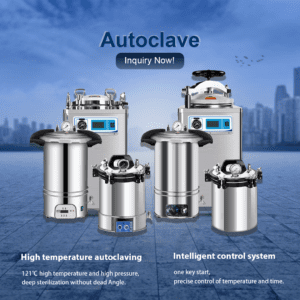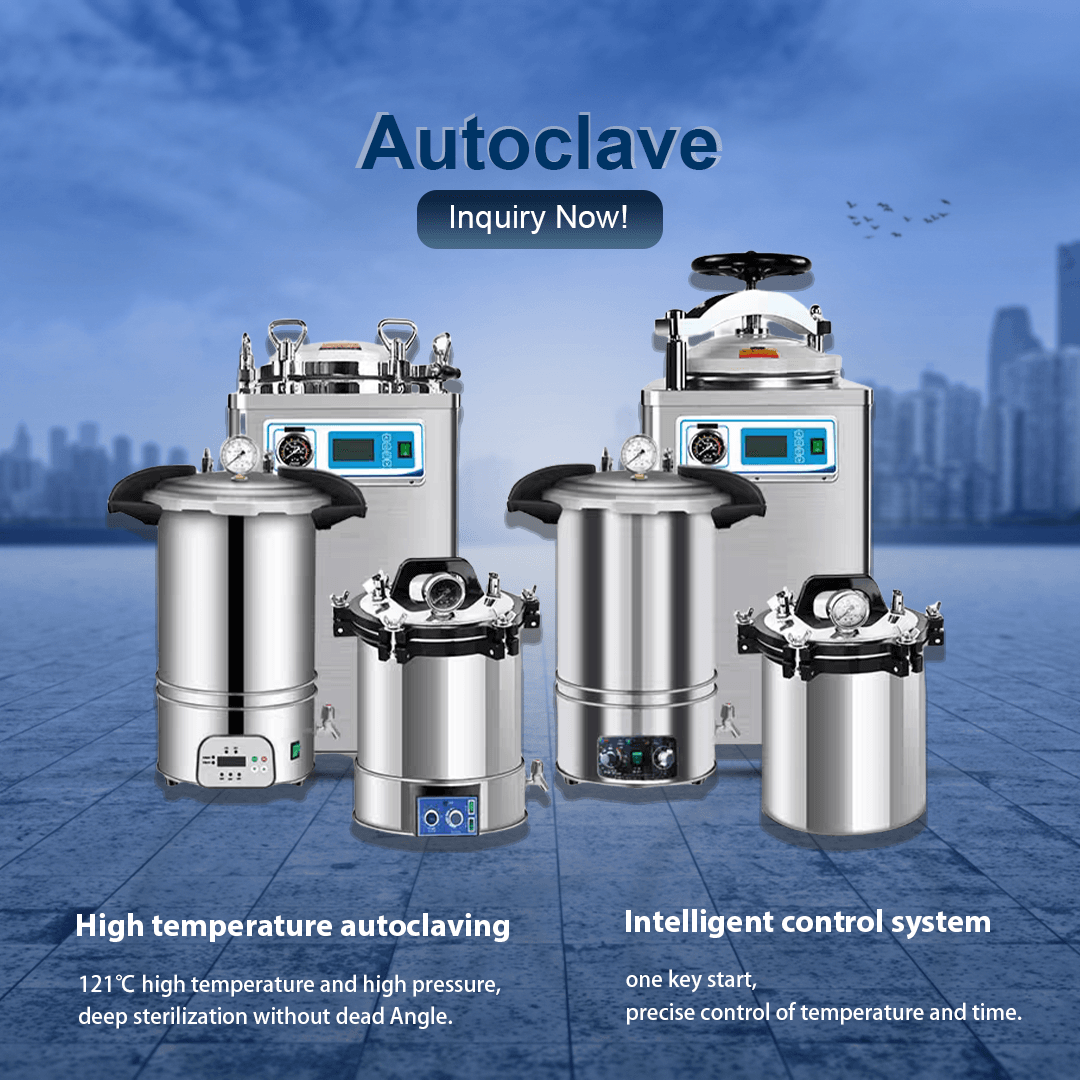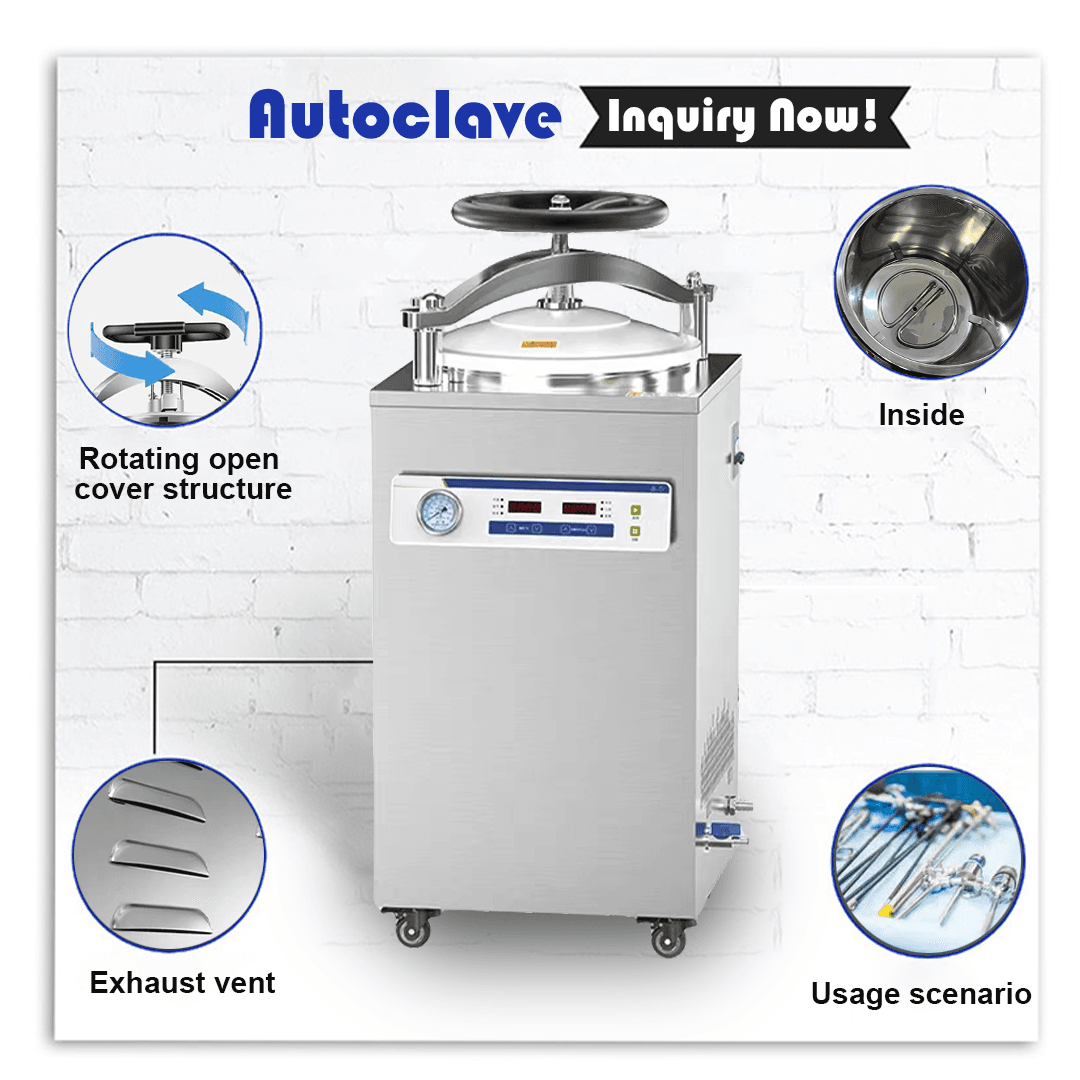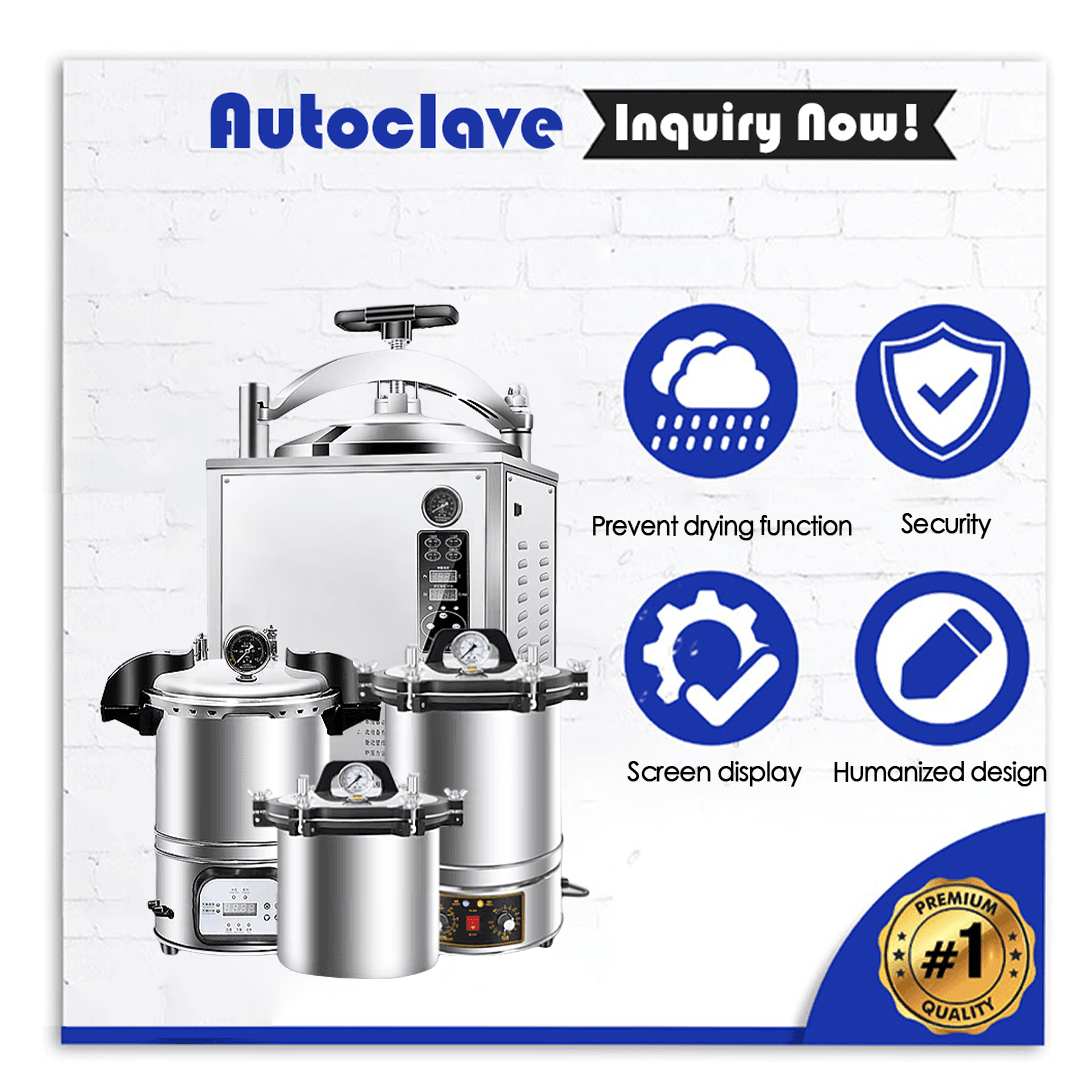
The autoclave machine represents a specialized apparatus designed to sterilize tools and materials by exposing them to high-pressure steam at increased temperatures. The sterilization method destroys bacteria alongside viruses, fungi, and spores to make medical instruments safe for clinical applications. The autoclave functions as a steam sterilizer and serves as essential equipment in areas that require strict contamination control including operating rooms and dental clinics as well as research laboratories.
Medical equipment distributors and procurement specialists need to understand the autoclave’s function in infection prevention to meet healthcare providers’ requirements. Autoclaves provide essential safety measures while ensuring strict adherence to health regulations.
An autoclave machine operates based on a straightforward and powerful principle. This equipment applies pressurized steam which generates moist heat to break down proteins and eliminate microorganisms. Autoclave machines function at temperatures above 121°C (250°F) and pressures ranging from 15 to 30 psi based on the specific sterilization needs and model design. The method of using simultaneous heat application with pressure and timing successfully destroys even bacterial spores which are highly resistant to other forms of sterilization.
An autoclave machine contains multiple critical components that function together to perform sterilization. These include:
The chamber is a closed section where objects are positioned to undergo sterilization.
Heating System: Generates steam by heating water.
The pressure control system maintains sterilization effectiveness by regulating pressure levels within the autoclave.
Safety valves function to prevent excessive pressure buildup while maintaining operator protection.
The Control Panel enables users to adjust parameters such as temperature and pressure along with cycle time.
Autoclaves exist in multiple forms to meet specific application requirements and distributors who understand these distinctions can better serve diverse customer demands. Common types include:
Gravity Displacement Autoclaves work best when sterilizing solid items that do not absorb moisture.
Pre-Vacuum Autoclaves provide effective sterilization for porous materials and intricate instruments by evacuating air before steam injection.
Benchtop autoclaves are compact versions that fit small-scale facilities including dental clinics.
Autoclaves present as vertical or horizontal models that differ by chamber orientation to provide adaptable solutions based on spatial constraints and capacity needs.
Knowledge of autoclave types enables distributors to suggest the best autoclave models for different healthcare environments which improves customer trust and satisfaction.
Autoclave machines serve key roles in the medical industry.
Autoclave machines function primarily to sterilize surgical instruments. All tools used during invasive procedures including scalpels and forceps must be sterilized to eliminate contaminants and prevent infections. Autoclaves sterilize surgical instruments to ensure they meet patient safety sterility standards before use.
Autoclaves help sterilize glassware, pipettes and other equipment in research and diagnostic laboratories. Autoclaves prevent cross-contamination during experiments which leads to more accurate results. Autoclaves represent an essential product category for procurement professionals who supply laboratory equipment.
The management of biohazardous waste involves the use of autoclaves. Before being discarded medical waste materials like used bandages and disposable instruments undergo sterilization to reduce infection spread. The application of autoclaves proves especially important for medical facilities that generate large quantities of waste.
Dental and veterinary practices frequently use compact autoclave models to sterilize their tools and equipment. Healthcare distributors find these compact sterilization units appealing to small providers who need dependable yet affordable solutions.
Autoclave machines primarily ensure patient safety through their function of removing pathogens from medical tools. Healthcare providers who focus on infection control will find autoclave machine benefits particularly appealing when distributors emphasize these advantages.
Healthcare facilities must adhere to rigorous standards for sterilization and hygiene. Healthcare facilities use autoclaves to follow health authority regulations which helps them avoid penalties and legal troubles. Your role as a supplier is strengthened when you provide compliant equipment because it establishes you as a reliable partner.
Although autoclave machines require substantial upfront investment, they provide long-term cost benefits by decreasing the use of disposable instruments and lowering infection-related complications. The cost-saving benefits of autoclave machines should attract procurement managers who prioritize budget optimization.
Autoclaves are multipurpose devices that can sterilize various equipment including both surgical tools and laboratory glassware. The multifunctional nature of autoclaves allows healthcare facilities to benefit from their broad range of capabilities while distributors can use this attribute to either sell additional products or create equipment bundles.
Choosing an autoclave machine requires consideration of multiple factors.
Healthcare facilities must evaluate both the size and capacity of autoclaves when making purchasing decisions. High-capacity autoclave models are essential for large hospitals because they deal with a significant number of instruments whereas small clinics benefit most from compact benchtop units. Through capacity assessment of your clients you can better direct your equipment recommendations.
The operational efficiency of facilities depends on the different sterilization cycle times of various autoclave models. Healthcare facilities with substantial instrument throughput tend to choose autoclave models that complete cycles more rapidly. Analyzing cycle times allows you to select an autoclave that fits seamlessly with your client’s operational workflow.
The combination of easy-to-use interfaces and low maintenance demands makes autoclaves appealing options for healthcare facilities that operate at full capacity. Providing autoclave machines with easy-to-use controls and maintenance will distinguish you as a supplier who prioritizes your clients’ convenience.
Dealing with high-pressure steam equipment requires strict safety measures. Autoclaves that include strong safety systems like automatic shut-off functions and pressure relief valves are critical for accident prevention. Explaining these features will establish trust with procurement professionals who prioritize staff safety in their purchasing decisions.
The initial purchase price of autoclaves presents a financial obstacle for smaller facilities operating on tight budgets. To overcome the initial investment hurdle of autoclaves distributors should provide financing solutions and emphasize the long-term economic benefits of using autoclave equipment.
Larger autoclave models take up substantial space which presents limitations for small clinics and laboratories. Providing multiple autoclave sizes ranging from benchtop to portable versions enables facilities to address space constraints.
The operation of autoclaves demands comprehensive training to achieve both safety and performance effectiveness. Distributors enhance their offerings by supplying training materials and facilitating staff education through professional expert connections.
Sterilization equipment technology advances quickly through innovations designed to enhance operational efficiency and environmental sustainability. Some emerging trends include:
Modern autoclaves are engineered to use less water and electricity which makes them attractive to facilities that prioritize environmental responsibility.
Autoclaves now frequently feature digital monitoring and remote control capabilities which provide enhanced convenience and precise operation.
Recent advancements decrease cycle times while maintaining effectiveness to serve high-throughput environments.
By keeping abreast of current trends distributors can establish themselves as innovative suppliers who effectively address their clients’ upcoming needs.
The medical industry relies on autoclave machines as essential tools that provide instrument and material sterility to protect patients while meeting regulatory standards. Medical equipment distributors, dealers and procurement professionals must understand autoclave functionality as well as its applications and benefits to provide effective service to healthcare providers. Tailoring autoclave solutions to meet specific facility needs will help you build trust and create long-lasting client partnerships. Ongoing technological advances make it critical to stay updated on autoclave design innovations to improve value delivery in this essential sector.
Should you need assistance sourcing top-quality autoclave machines or want to discuss optimal options for your clients feel free to get in touch. Contact us at [inquiry@shkeling.com](mailto: You can contact us through inquiry@shkeling.com or use our WhatsApp number at +8618221822482 and find more details at https://autoclaveequipment.com/. We provide support to help you identify the best sterilization solutions for your business requirements.
1. An autoclave machine sterilizes equipment and materials by using high-pressure steam to destroy bacteria and other pathogens. Autoclave machines sterilize medical instruments and laboratory equipment by utilizing high-pressure steam to destroy bacteria, viruses, and spores.
2. The time it takes for an autoclave to complete a sterilization cycle depends on the machine model and the materials inside. The length of a sterilization cycle depends on both the autoclave model and the materials undergoing sterilization. The standard cycle duration for autoclave sterilization ranges between 15 and 60 minutes, and this does not include any subsequent cooling periods.
3. Can autoclaves sterilize all types of materials? Autoclaves work well with materials that can withstand heat and moisture but may damage heat-sensitive items such as specific plastics or electronics. Always check the manufacturer’s guidelines for compatibility.
4. What industries benefit most from autoclave machines? Autoclaves serve as crucial equipment across hospitals and dental clinics and veterinary practices as well as research laboratories because they are vital to healthcare industries that prioritize infection control.
5. What is the recommended frequency to perform maintenance on autoclave machines? Routine maintenance is essential to maintain both peak performance and safety standards. Users should adhere to the manufacturer’s recommended maintenance schedule which typically involves daily, weekly and monthly inspections with additional professional servicing when necessary.
6. Autoclave machines represent high-demand products because they serve as essential components for infection control in healthcare settings. Healthcare facilities depend on autoclaves for infection control which results in strong market demand for these essential products. By providing multiple autoclave models your business can satisfy different customer requirements while building trust as a dependable supplier.

Healthcare facilities must adhere to rigorous hygiene and sterilization standards without exception. Medical equipment distributors and procurement professionals must understand the tools that maintain standards to deliver value to healthcare

Maintaining sterile medical tools and equipment stands as the most important practice for preventing infections and ensuring patient safety in healthcare settings. Medical equipment distributors along with dealers and procurement

The fast-paced healthcare sector operates under strict regulations which demand that sterility maintenance stands as a primary concern to protect patient safety and ensure compliance with operational standards. Medical equipment

Sterilization equipment serves as an essential tool in healthcare settings to maintain cleanliness standards and protect patients. Medical equipment distributors together with dealers and procurement specialists need to know the

Autoclaves serve as essential components of sterilization processes in healthcare facilities through high-pressure steam to destroy pathogens on medical instruments and other materials. Medical equipment distributors and procurement specialists must

Healthcare environments must prioritize sterilization because it protects patients and staff by removing infectious pathogens from medical devices and materials. The autoclave stands out as one of the best tools